OPEN ASSEMBLY
Experiments in Aesthetics and Politics







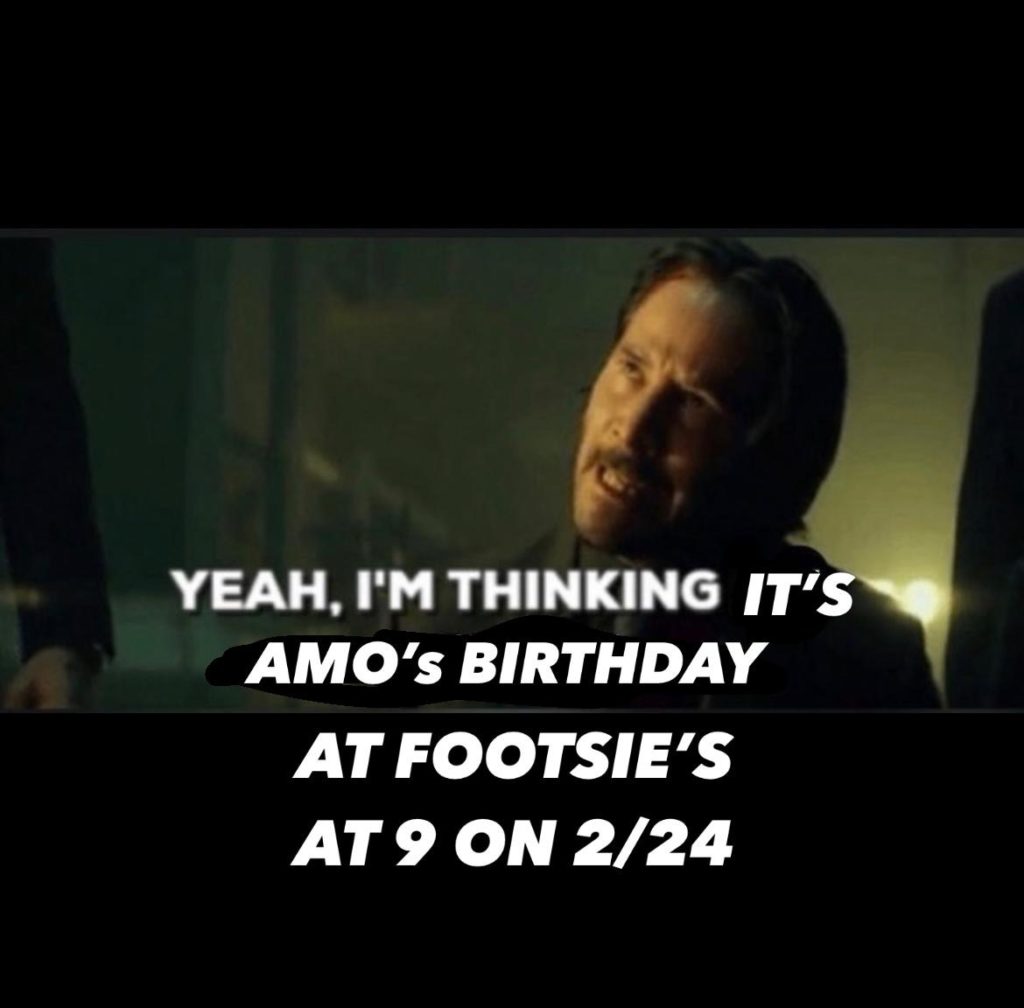

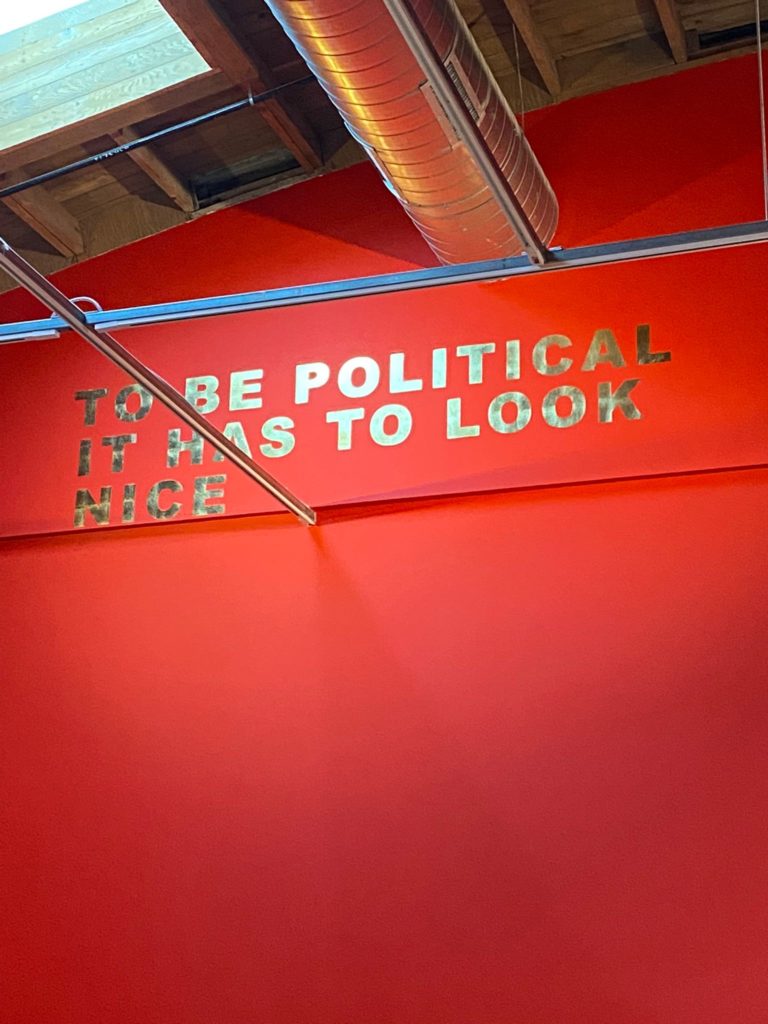


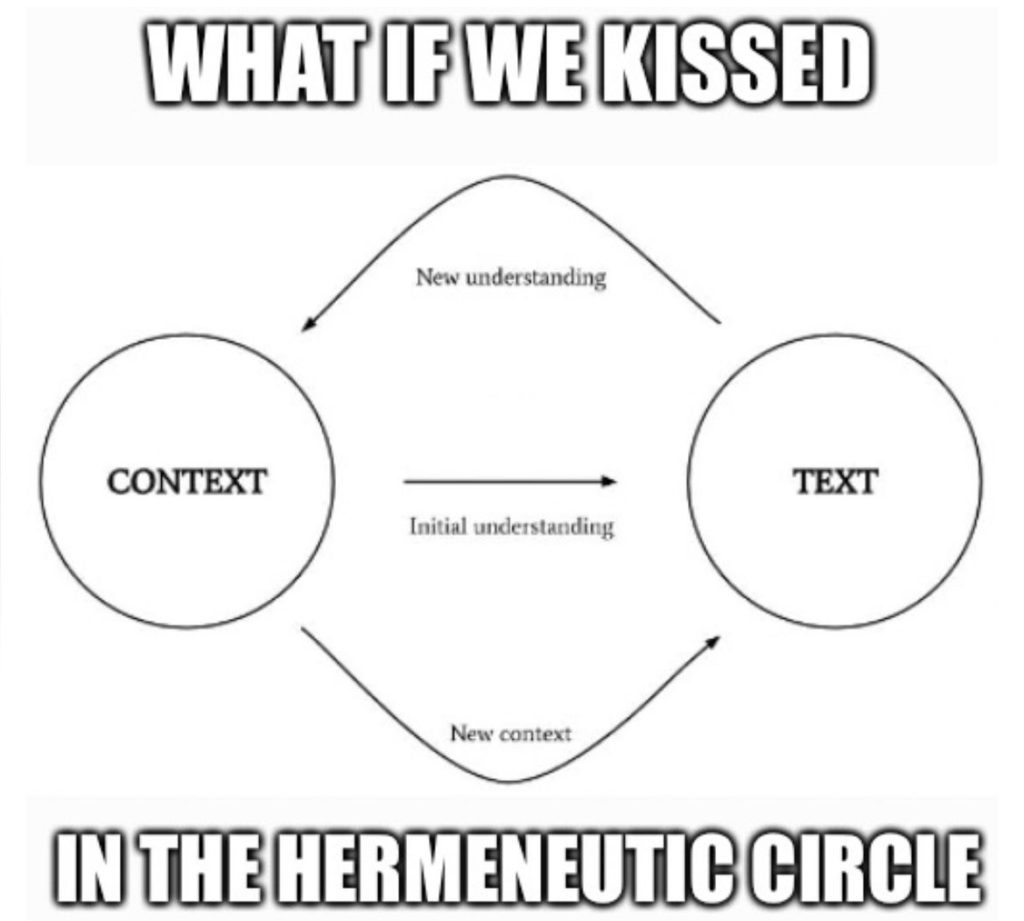


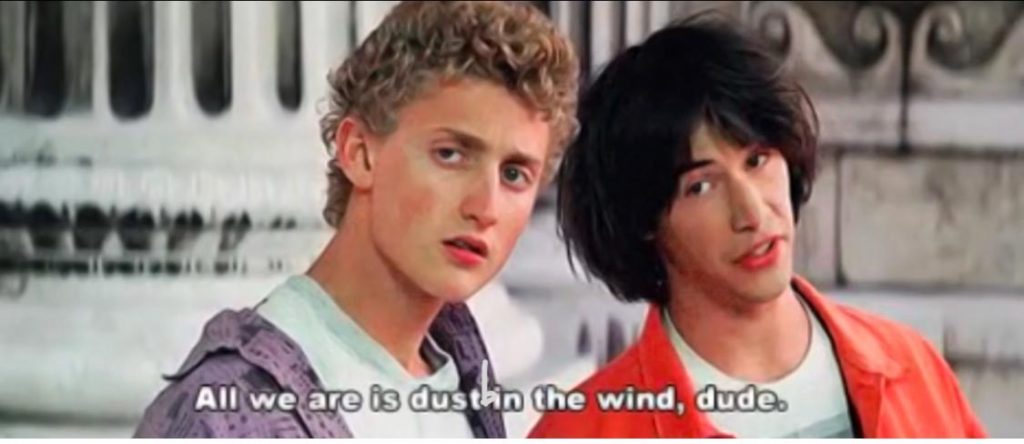



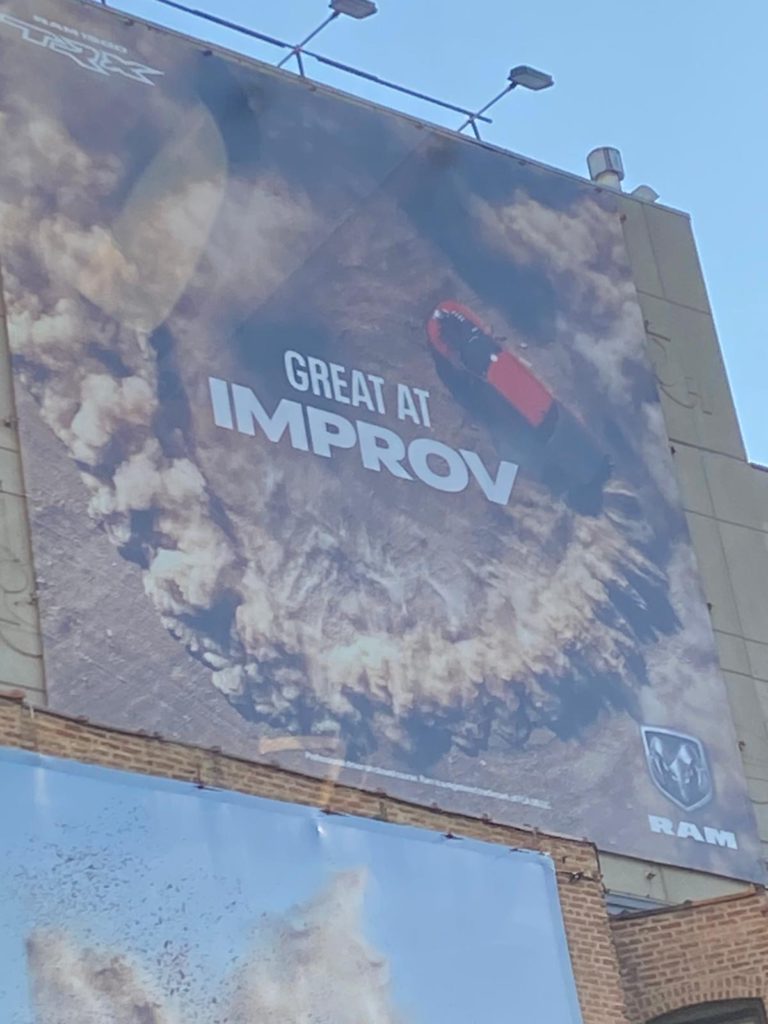
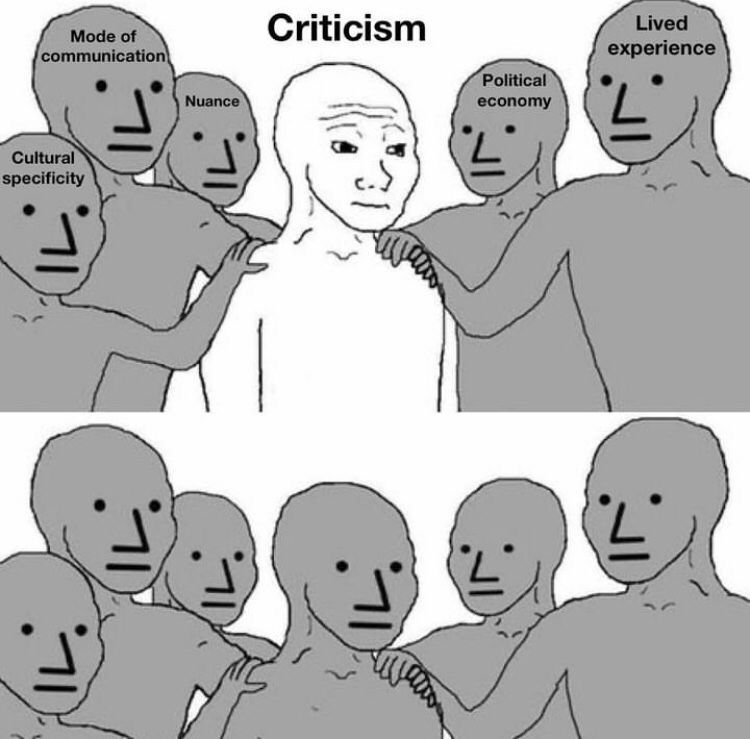
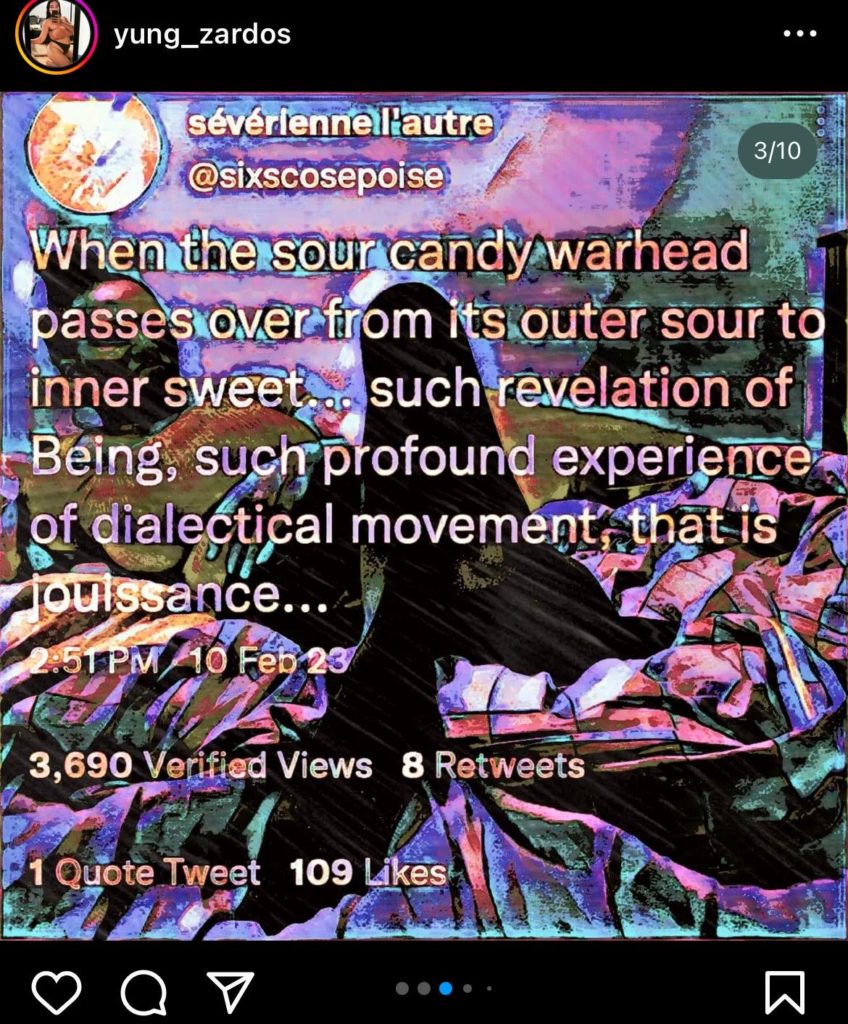

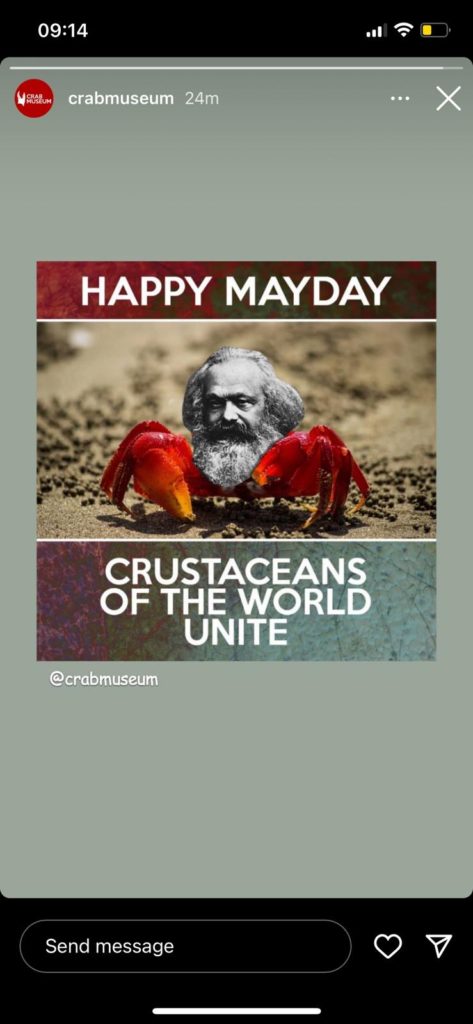
[ pending ]
[ pending ]
[ pending ]
[ pending ]
[ pending ]
[ pending ]
[ pending ]
[ pending ]
[ pending ]
[ pending ]
[ pending ]
This piece was written for the occasion of Katerina Kolozova’s lecture, “Artifices, Arts and Artificiality: Revisiting Aristotle’s notion of Technē and Reinventing its Interpretative Potential,” which is part of the Spring 2022 Aesthetics & Politics Lecture Series, “Dominance and Revolution.” Kolozova is a senior researcher and professor at the Institute of Social Sciences and Humanities, Skopje, and visiting faculty at Arizona State University, Center for Philosophical Technologies. At the Faculty of Media and Communications, Belgrade, she teaches contemporary political philosophy.
In this piece, I read McKenzie Wark’s recent essay “Girls Like Us” through Katerina Kolozova’s writing on philosophical thought experiments. At heart, this essay poses the following question: what happens if we treat fiction writing as a type of thought experiment? Wark and Kolozova both question the value of rational (“unmarked,” as Wark would say) thinking – more particularly, they trouble the intellectual tendency to treat “rational” subjects as the ideal default position for approaching complex social questions. Both writers turn to subjective experience as a way for thinking through the deficiencies, or limits, of philosophy (Kolozova) and literature (Wark). At the same time, both express a level of soft reservation regarding the limits of subjective experience – for Kolozova, there are certain philosophical experiments that are valuable precisely because they do not correspond to any lived experience; for Wark, the question of “property,” or of who owns the right to tell which stories, often blurs the lines between subjective experience and shared social identity, creating difficult questions around the limits of subjective experience’s insightfulness.
In what follows, I first work through Kolozova’s writing on thought experiments and affect, and then apply Kolozova’s arguments to Wark’s writing on trans narratives and property. Through this, I arrive at a synthesis of sorts of their respective positions, which I refer to as “small philosophy” (another fitting description might be “the novel-as-thought-experiment”). Small philosophy, as I use it, refers to the idea that fiction can produce philosophically valuable content by appealing to the affective experience of the author’s real-life, but that, in doing so, certain limitations are necessarily invoked regarding the scope of this value. Small philosophy novels, unlike most classic bourgeois literature, do not claim to represent some universal experience of love, morality, death, etc., but rather situate themselves in the particularities of an individual’s experiences on the fringe of society. At the same time, small philosophy novels do not over-value the importance of the individual’s lived experience, but rather treat it as a necessary starting point for thinking through large-scale philosophical and social questions without the problematic burden of rational thinking or “unmarked” identity. From this vantage point, small philosophy novels contemplate large-scale philosophical and social questions, but without making claim to a universal form of knowledge. They expand upon universal questions of love, desire, morality, etc., augmenting and multiplying the terms through which such ideas are thought, as opposed to asserting a conclusive sense of authority over such terms. In order to elucidate this point, and thus ground my interpretation of Kolozova and Wark’s respective theories, I end on a brief reading of Gary Indiana’s novel Horse Crazy, which I see as an exemplary model of the small philosophy novel.

In “Affect, Rationality, and the Experience Machine,” Katerina Kolozova analyzes the philosophical value and limitations of thought experiments, most notably as they pertain to Robert Nozick’s experience machine and Felipe de Brigard’s inverted experience machine. Nozick’s original iteration of the experience machine poses the following question: if we were given the option to plug into a machine that would allow us to live in a simulated reality of our own making, would we do so? Nozick argues that we would not choose to live in the experience machine – humans derive value, he contends, not through experience, but rather through the act of doing. For Nozick, the simulation of experience is not, within itself, enough to justify participation in the machine. In 2010, de Brigard attempted to empirically test Nozick’s experience machine through a type of inverted survey. In de Brigard’s experiment, participants were told that they are currently living in the experience machine, and then asked if they would like to exit the machine. Each participant was given information about their real-life counterpart – some were imprisoned criminals, some had an identical quality of life inside and outside the machine, and some were multi-millionaire socialites. To de Brigard’s surprise, over half of the participants with identical life circumstances on either side of the machine chose to exit the machine, whereas only 50% of those who were told they were millionaires chose to exit. Using this data, de Brigard argued that humans tend to favor maintaining the status quo, regardless of if doing so goes against their rational best interests.
In an earlier essay, “Can We Test the Experience Machine?,” Kolozova problematizes the legitimacy of de Brigard’s experimental design. First, she argues that de Brigard’s test subjects were in the wrong affective state – in order to provide authentic responses to an inverted experience machine scenario, the test subjects would have to genuinely feel the range of emotions one would feel in such a scenario, including, “confusion, incredulity, fear, and uncertainty” (Kolozova, 269). Second, Kolozova contends that subjects who are surveyed in the wrong affective state answer ideally, or as they imagine their best self would. In this sense, their responses tell us nothing about how we would actually respond in such a scenario – they only reveal a sketch of how, from an unexperienced perspective, we might want ourselves to act. With these two limits in mind, Kolozova concludes that thought experiments like Nozick’s experience machine and de Brigard’s inverted experience machine cannot be practically tested. Their value, rather, lies in their ability to contemplate philosophical questions that exceed the jurisdiction of empirical testing.
In “Affect, Rationality, and the Experience Machine,” Kolozova uses Dan Weijers’ essay “We Can Test the Experience Machine” as an intellectual foil for thinking through the larger philosophical implications of thought experiments. Weijers’ essay, which is largely written in response to Kolozova’s earlier piece “Can We Test the Experience Machine?,” refutes Kolozova’s argument regarding proper affective states. Placing test subjects in the “wrong” affective state, Weijers argues, is actually preferable, insofar as it implies that their responses will be more rational. If taken seriously, Weijers argues, Kolozova’s insistence on testing thought experiments in the proper affective state would imply that most, if not all, thought experiments are untestable. Kolozova makes two points in response. First, in reference to Weijers’ interest in “rational” responses, Kolozova argues that prioritizing rational responses would severely degrade the value of social experiments – few social phenomena that are worth studying take place in rational, affectless settings, and thus rational thinking can only authentically represent a rather small, fairly uninteresting portion of human experience. Furthermore, Kolozova argues that Weijers does not justify why rational responses should be understood as being inherently more valuable. He makes no case, she contends, for why we stand to learn more from the response of a distanced, affectless subject than that of an experienced, less coherent subject.
To Weijers second argument, which suggests that Kolozova’s insistence on proper affective states could be made to apply to the vast majority of philosophical inquiry, Kolozova responds: yes, but why is that a problem? By “proper affective state,” Kolozova means that the series of emotions and thought patterns experienced by the test subject authentically mirror those that the subject would feel in a ‘real life,’ or uncontrolled, version of the situation that the test seeks to study – for instance, the proper affective state for learning that one has been living in an experience machine might be bewilderment, fear, and incredulity; the proper affective state for someone taking a test they have spent months preparing for might be relaxation, logical thought patterns, and familiarity. Testability, Kolozova argues, is not the ultimate determinant of a thought experiment’s worth. Some experiments, Kolozova argues, do not require an affective state in order to function – “they do not require us to manifest any specific affect to understand them,” she writes, “but only require them to imagine something (e.g. that a scientist knows every physical fact)” (Kolozova, 273). The value of such experiments, Kolozova contends, is not their ability to correspond to some potential lived reality, but rather their ability to, “elicit our intuitions, persuade us, or refute theories” (Kolozova, 273). They make no claim to hard empirical truth, but rather create a contemplative space for considering opaque, contradictory, and unresolvable questions. Other thought experiments, Kolozova argues, can be tested, but only insofar as they rely upon affective states that some people, but perhaps not all, have experienced. As she puts it, “to really understand, say, the trolley problem, we must either have the experience of being confronted with the trolley ourselves, or be able to imagine similar experiences and apply them to this case” (Kolozova, 274). “When we have not experienced the situation and cannot conjure the proper affect in any other way,” she continues, “this appearance of understanding is just that” (Kolozova, 274). In order to be of value, one’s response must be informed by prior lived experience – the response of the distanced, rational subject merely apes at the superficial appearance of that which it does not truly understand. In this sense, Kolozova simultaneously rejects the notion that objective rationality is synonymous with philosophical value, while also erecting a type of soft distance between subjective experience and philosophical knowledge – while experience lends itself to certain types of valuable responses, there are whole hosts of imaginative, affectless thought experiments that exceed experience’s particular jurisdiction.
For Kolozova, thought experiments can be philosophically valuable in one of two ways: they allow us to better understand large scale social problems by appealing to the knowledge of subjective, lived experience, or they allow us to better understand large scale social problems by imagining intentionally fictional scenarios. Neither move can fully satisfy, or solve, the entire set of philosophical problems posed by existence; they exist as supplements to one another, taking a two-pronged approach to questions that exist outside the jurisdiction empirical study. For Kolozova, thought experiments expand upon and augment the scope of philosophical inquiry in ways which are valuable, yet do not lay claim to representing objective, or conclusive, truths about lived experience.

In “Girls Like Us,” McKenzie Wark addresses the problem of property as it pertains to fiction writing. Specifically, she isolates the following problem: who owns the right to tell certain stories? What processes of accreditation go into determining who can speak on what? Wark is foremost interested in trans narratives, and particularly how trans writers go about using their lived experience of transness as a pretext for thinking about large-scale topics of gender, love, pain, and desire. Classic bourgeois literature, Wark contends, has made its name through appropriating the pain of others as the narrative property of affluent, cisgendered writers. One remedy to this dilemma, which Wark is not in the least opposed to, is to expand the field of who is allowed to write novels, diversifying the types of voices who can lay claim to story-telling. At the same time, this solution does little to attend to the issue of the “unmarked” cisgendered author. The inclusion of trans authors into literary spaces often comes with the adverse expectation that trans writers must exclusively write trans narratives in order to be of value – they must become “pimps of their own pain” (Wark). The cisgendered writer, on the other hand, is often left free to profit upon the literary value of trans narratives in an exploitative, superficial manner, insofar as their subjectivity is not “marked” by, or relegated to, a limited set of content concerns. “[Trans people] are often in cis people’s books, fiction and non-fiction alike, as a narrative device or alibi for cis people’s desires and anxieties about their gender,” Wark writes – “cis writers will continue to write as unmarked subjects, with ownership over the big universal stories, such as gender” (Wark).
Increased inclusion does little to displace cisgendered writers’ status as “unmarked” subjects – as subjects, in other words, who are endowed, through their lack of marginalization, with the freedom to appropriate the experiences of others in order to progress grand statements on the nature of large-scale questions of gender and desire. Much like Kolozova, who argues that thinking from the “wrong affective state” ultimately reproduces only the “appearance of understanding,” Wark contends that unmarked writers falsely assume that their subjective experience of pain as cisgendered people grants them a narrative authority over other forms of pain that they have no understanding of. As Wark puts it, “if a bourgeois writer’s pain-story holds up, she can use it to regard the pain of others, on a franchise model. We get this from cis women a lot: I have suffered from the patriarchy so let me tell you tranny bitches what’s wrong with you!” (Wark). In a mirror of Weijers’ critique of Kolozova, the position of the unmarked writer is taken to be more authoritative on trans issues than the positions trans writers take up for themselves, insofar as the unmarked writer is positioned as having a less affectively clouded, and more capacious, or universal, understanding of large-scale questions regarding gender, sex, and patriarchal oppression. “The unmarked subject,” Wark contends, “can narrate any particular person’s pain because they own the universality of the pain of being human” (Wark).
Trans writers, on the other hand, must perform a specifically non-universal, “trans” type of pain in order to gain credibility in the eyes of bourgeois literature. They must prove that they have experienced a sort of suffering through marginalization, that they “own” the experience of transness. This performance of pain does not ask us to consider what sorts of surprising, new, or valuable ideas trans narratives might stand to offer, but rather forces trans literature to speak on that which non-trans audiences take to be the marker of authentic trans experience: transphobic violence, marginalization, body dysmorphia, etc.. Unlike the unmarked writer, the trans writer’s performance of pain does not grant them universal jurisdiction over the entire scope of gender, sex, or desire. Rather, this performance both accredits and diminishes the trans writer, granting them a tenuous ownership over their own narratives, but only those slivers of their narrative which fit into the unmarked subject’s superficial understanding of transness – these narrative slivers, of course, are not fully owned by the trans writer, but rather also the property of their unmarked counterparts.
This diminishment, Wark argues, fails to comprehend the deep complexity of thought, form, and content present in trans literature. Wark traces a genealogy of trans writing spanning multiple cultural levels, from high theory to smutty blogging. Trans writing, Wark contends, does not have a unified orientation or subject, but rather moves in divergent patterns: there are untutored, adolescent Tumblr posts and open mic poems (which are more cultural than they are literary), the “minor literature” of the “sad trans girl” novel which imagines a world that has little contact with cisgendered people, the contemporary trans novel that addresses the universal, “but modifies it by making the particularity of [trans] pain expand the bounds of gendered being beyond cis norms” (Wark).
Transness, for Wark, is not a limiting or overly affected narrative position, but rather an expansive medium for rethinking the scope and stakes of large-scale social and philosophical questions. Much like Kolozova’s testable thought experiments, Wark turns to the perspective of lived, subjective experience as a site for thinking through the real-world implications of philosophical questions regarding sex, gender, collectivity, pain, and so forth. As she writes, “it turns out, the more heavily marked a subject you are, the more, in a kind of dialectical rebound, your pain reverberates back against the structures of the totality of modern, commodified, spectacular, carceral life and death, not to modify but to shatter it” (Wark). Marked experience, or experience of the “proper affective state,” as Kolozova would put it, becomes a corrective for the imaginative deficiencies of the “unmarked” subject, undoing, rather than contesting, the current state of universal philosophical questions. “We’re at the point,” Wark writes, “where our best prose writers bring our pain into the picture of gendered pain as a totality, and modify how that can be felt, beyond where the cis have felt and formed it” (Wark).
At the same time, Wark does not overdetermine the narrative value of marked identity categories like transness. Shared identity, Wark contends, does not fully overcome the question of property – underlying marked identity, there exists a myriad of disparate lived experiences and material circumstances that reignite the possibility of exploiting another’s pain for narrative profit. Speaking to an unnamed trans woman addressee, Wark writes, “you just run into a wall of pain inflicted by a cis world that on bad days wants you dead and on a good day tolerates or patronises you. Being white and bourgeois spares me most but not all of that. History is what hurts, as Fred Jameson said, but it hurts you a lot more than me” (Wark). Wark’s white, bourgeois stature precludes her from the right to speak on certain registers of trans experience, throwing up certain limitations around the philosophical insights she can glean from her lived position. Much like Kolozova, Wark adopts a two-pronged approach – in order to displace the unmarked, or rational, default, one must employ a mix of subjective, affectively saturated experience and imaginative, purposefully unresolved contemplation. The subjective narration of trans experience, for Wark, must be coupled with an imaginative capacity to picture a world beyond the current social order. Wark turns to two formal genres, autofiction and New Narrative, in order to think through this point.
Autofiction, on the one hand, brings the writer directly into the text – it is, “where the marked self – marks itself” (Wark). As Wark writes, “autofiction doesn’t solve the problem of making your story my property, but it does bring the problem into the text… I am here, in the writing, out of a sense of obligation, that if I tell any of your stories – that’s on me” (Wark). Autofiction gives Wark an avenue for writing from a marked trans perspective, yet without overextending her right to speak with authority on the totality of trans experience. New Narrative, on the other hand, offers a way for Wark to imaginatively contemplate the existence of a collectivity that extends beyond her subjective experience. New Narrative makes frequent use of gossip, undisguised naming, and text-metatext (the intentional interpolation of narrative devices that “break the fourth wall” of the page, so to speak, and openly acknowledge the author’s role in creating a fictional setting) in order to imaginatively create, or bring into being, communities and ideas which do not currently exist in the world. As Wark writes, “there’s generative tension [in New Narrative] between the avarice of authorship and the ambience of a collectively made literary space, one that includes non-writers” (Wark). Between these two poles, the real author and the imaginary collective, Wark is able to push towards a more capacious vision of the novel’s value, one which recognizes both the limits of subjective experience and the unresolvable nature of imagination.

Pushing past the particular concerns of both Kolozova and Wark (for Kolozova, the purpose of thought experiments, for Wark, the relationship between trans narratives and property), I want to end with a brief consideration of what I see as a through line, or synthesis, between the two: the small philosophy novel.
Both writers diagnose a type of imaginative deficiency inherent in rational/unmarked positions: the lack of lived experience leads the rational/unmarked to mistake the external appearance of another’s experience as the reality, or truth-value, of that experience itself. In writing from a rational/unmarked perspective, one falsely reinscribes one’s lack of experience as a universal lived experience, lending their thoughts an air of philosophical rigor which has no true value beyond its own self-assertion. At the same time, both Kolozova and Wark ascribe certain limits to subject experience – while it can attend to philosophical questions that manifest in real-world scenarios, it is incapable of attending to questions that are essentially imaginative, or purely fictional, in nature. Both Kolozova and Wark adopt a two-prong approach, building a larger system of philosophy/narrative out of the smaller fragments of insight offered by subjective experience, on the one hand, and imaginative contemplation, on the other.
The small philosophy novel, as I see it, does exactly this. It refuses to directly speak on universal issues; it does not attempt to proffer some sort of lasting or conclusive truth. Rather, through a dual mining of subjective, affectively clouded experience and unresolved, imaginative scenarios, it arrives at a type of opaque philosophical expression, defined less by grand-standing universal arguments and more so by a conglomeration of smaller insights which attend to complimentary, but discrete, problems.
Gary Indiana’s Horse Crazy is a shining example of the small philosophy novel. Set in Manhattan in the late-‘80s, Horse Crazy tracks the delirious descent of an unnamed narrator, caught up in the madness of a doomed romantic relationship. Horse Crazy is, above all else, a novel about the meaning of love. Much like Indiana himself, who was the Village Voice’s art critic during the mid to late-‘80s, Horse Crazy’s narrator is a cynical, speed-addicted art critic. He falls in love with a younger boy, Gregory Burgess, an emotionally distant, possibly heroin-addicted, starving artist (in later interviews, Indiana admits that a real-life failed relationship with a heroin addict provided the pretext for Horse Crazy).
Over the course of the novel, Gregory and the narrator drift together and apart, their dueling contempt and adoration for one another taking on increasingly comical dimensions. The AIDS epidemic haunts the background of Horse Crazy – speaking with a deflating bluntness, the narrator remarks, “anyone who is known who isn’t seen for a while is rumored to be dying of AIDS, addicted to heroin, living in another country, or dead, such is the idle chatter of New York and particularly of Downtown Manhattan” (Indiana, 22). Perhaps surprisingly, the narrator shows little concern for AIDS, mostly on account of his obsession with Gregory. Friends pass away in hospital beds without significant remark, occasional signs of potential infection are brushed off and never returned to. As he puts it, “if I hadn’t had Gregory distracting me, I probably would have noted the sudden omnipresence of death with greater clarity. Instead, the fatal sarcomas, pneumonias, and nueropathies reached me as isolated incidents, or manifestations of an abstract social problem” (Indiana, 96). The narrator does not experience a coherent, or logically predictable, response to the experience of living through the AIDS epidemic, which might include a number of standard tropes like mourning, loss, risk-aversion, and so on. Rather, in the vein of the small philosophy novel, his story line unfolds along the register of an ambiguous, seemingly irrational form of lived experience.
AIDS narratives have historically tended to rely upon a small set of tropes and devices, most of which position the epidemic as a vector for emotional, spiritual, or political character development. Prior Walter describes his seroconversion as a “threshold of revelation” in Angeles in America; the narrator of Herve Guibert’s auto-fictional novel To the Friend Who did not Save My Life vows to defy his own mortality by writing a masterpiece; the death of the character Colin in Russell T. Davies’ It’s a Sin drives the remaining cast members to take up militant activism.
Contrary to most AIDS narratives, Indiana offers no catharsis through mourning, no transformation through infection, no rational reflections on mortality (one of the novel’s first, and most famous, lines starkly departs from the standard tone of AIDS literature: “affection is the mortal illness of lonely people”). Indiana’s narrator is saturated in the affective delirium of love, guided by neither rational thinking nor the larger historical context of his moment, but by the confounding allure of Gregory. He brushes off concerned remarks from his friends; occasional revelations about the doomed nature of their relationship are quickly forgotten. In this sense, Indiana takes a hyper-subjective experience of love and loneliness, one marked by the contexts of AIDS, homosexuality, and drug addiction, as a starting point for reflecting upon universal questions of desire.
Rather than utilize his subjective experience as a cipher for speaking on the expected topics of the era (mourning, the looming fear of death as a catalyst for character development, the depravity of drug addiction, gay sex culture), Indiana takes his subjectivity as evidence of the fact that love, obsession, and desire persist in the face of social crisis – they persist to such an intense degree, in fact, that they jeopardize all rational considerations of one’s best interests. In the vein of the small philosophy novel, Indiana uses his subjective experience with a real-world dilemma (the conflict between love/desire and AIDS) to augment, or shatter, existing large-scale assumptions about what a rational, or expected, response to love in a social crisis might be. Following Kolozova’s argument, Indiana writes from the proper affective state, producing a robust response to his narrator’s environment which does not conform to outward, rational appearance. Indiana writes against the expectations placed upon his marked subjectivity, prioritizing self-indicting complexity and opacity over bourgeois credibility.
At the same time, Indiana provides no clear resolution for his narrator. Towards the end of Horse Crazy, the narrator comes to terms with the impossibility of his relationship with Gregory. All the same, he continues to wait for Gregory’s love, remarking, “what else can you do in this life, except attempt miracles?” (Indiana, 155). There is a dimension to his experience of love which cannot translate into the real-world, which must necessarily exist in the realm of magical thinking. This dimension possesses a certain philosophical value, insofar as the narrator repeatedly descends into dialogues on the impossibility of his fantasy, but such value cannot be proven in the real-world – he knows that a healthy relationship with Gregory is impossible.
One day, Gregory disappears without remark. Rumors spread that Gregory is homeless and back on heroin, but we are never provided with definitive proof that this is true. During Horse Crazy’s final monologue, the narrator reflects back on his time with Gregory, stating, “this story, if it is one, deserves the closure of a suicide, perhaps even the magisterial finality of what is usually called a novel, but the remnants of that faraway time offer nothing more than a taste of damp ashes, a feeling of indeterminacy, and the obdurate inconclusiveness of passing time” (Indiana, 223). The burden of passing time limits the power of the narrator’s insight. His subjective experience cannot truly commune with a universal experience of love within itself. It must be supplemented by a secondary, imaginative dimension, one which takes into account the affectless toll of passing time. In this sense, Indiana mirrors the second dimension of small philosophy literature, employing pure fiction as a means to supplement the imaginative limits of subjective experience.
There is no final resolution for the narrator, no clear affirmation of his experience’s ultimate value. In this sense, much like both Kolozova and Wark, Indiana adopts a two-pronged approach, working with both subjective, real-world social questions and imaginative, out-of-this-world philosophical problems, forming a large-scale mosaic out of fragmentary parts. The narrator’s subjective experience becomes both the occasion of his insight as well as its final limit. In this sense, small philosophy novels like Horse Crazy address a set of concerns that are present in both contemporary ethical philosophy and avant-garde literature. Although the small philosophy novel works against the dual forces of Western rationality and bourgeois norms, it does not exactly turn away from universal philosophical and social questions. Rather, it accepts the existence of a multiplicity of inherently limited, but nonetheless valuable, forms of philosophical and narrative contemplation, and out of these smaller tracks of thinking assembles a mosaic which, in its totality, attempts to augment, expand, or go beyond the limits placed upon philosophical thinking by empiricism, property, and dominant cultural norms.
The concept of the small philosophy novel, I believe, offers a valuable supplement to Wark and Kolozova’s respective projects. On the one hand, it provides a more capacious, general form for thinking through Wark’s arguments regarding fiction and social position – it affirms the general structure of her argument, while simultaneously opening up her theoretical contributions to a wider array of subjective experiences beyond (yet still including, of course) the topic of trans literature. On the other hand, it provides an aesthetic/material corollary to Kolozova’s writing, which is, at the end of the day, primarily interested in a narrow sub-section of contemporary philosophical discourse. The small philosophy novel, in other words, provides a vector for thinking through and applying Kolozova’s arguments outside of the realm of purely academic philosophy, creating a bridge between her thought and a larger culture of aesthetic and cultural production.
With this in mind, the small philosophy novel, as a concept, stands to partially bridge what are generally thought to be distinct intellectual projects (gender and class based cultural criticism, analytical philosophy, fiction writing), creating a vector for thinking through the ways in which multiple distinct fields of thought might be engaged in a shared type of social-philosophical argument.
Works Cited
Indiana, Gary. Horse Crazy. Seven Stories Press, 2018.
Kolozova, Katerina. “Affect, Rationality, and the Experience Machine.” Ethical Perspectives, 19 (2012 2: 268-276.
Wark, McKenzie. “Girls Like Us.” The White Review, December 2020. https://www.thewhitereview.org/feature/girls-like-us/